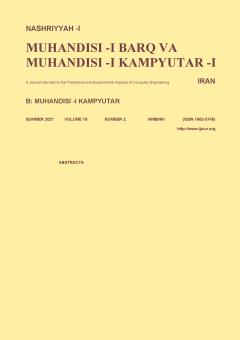-
-
List of Articles
-
Open Access Article
1 - A Transfer Learning Algorithm to Improve the Convergence Rate and Accuracy in Cellular Learning Automata
Seyyed Amir Hadi Minoofam Azam Bastanfard M. R. Keyvanpour -
Open Access Article
2 - A Semi-Central Method to Improve Energy Saving in Real Wireless Sensor Networks Using Clustering and Mobile Sinks
Fatemeh Sadeghi Sepideh Adabi Sahar Adabi -
Open Access Article
3 - Presenting a Multi-Criteria QoS-Aware Fault Tolerant Routing Algorithm for Network-On-Chips
Alireza Mahjoub Fatemeh Vardi Roya Rad -
Open Access Article
4 - Multi-Objective Optimization Solution for Virtual Machine Placement Problem in Cloud Datacenters with Minimization of Power Consumption and Resource Dissipation Perspectives by Simulated Annealing Algorithm
Mirsaeid Hosseini Shirvani -
Open Access Article
5 - A POI Recommendation Model According to the Behavior Pattern of Users Based on Friends List Using Deep Learning
sadaf safavi mehrdad jalali -
Open Access Article
6 - Improving Age Estimation of Dental Panoramic Images Based on Image Contrast Correction by Spatial Entropy Method
Masoume Mohseni Hussain Montazery Kordy Mehdi Ezoji -
Open Access Article
7 - Improved Semi-Quantum Direct Communication Protocol
Z. rashidi M. hooshmand -
Open Access Article
8 - Computing Colored Average Degree of Graphs in Sublinear Time
Mohammad Ali Abam محمدرضا بهرامی
-
The rights to this website are owned by the Raimag Press Management System.
Copyright © 2017-2026







